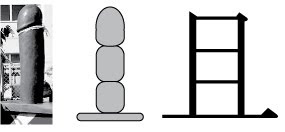On why too many fruits may be bad for your stomach

To answer this question, you need to appreciate that the absorption of the frustose molecules in your body is not straightforward. To transfer the fructose molecules from your intestine to your bloodstream across the intestinal membrane, you need to use a special vehicle named GLUT5 transporter. You can imagine GLUT5 as a truck specially designed to carry fructose molecules. The instruction to fabricate the GLUT5 transporter can be found in a program named SLC2A5. The SLC2A5 program is very small program of about 6.5 kilobytes (or 53,371 base-pair). And the location of the SLC2A5 program is in our first chromosome. Since the number of GLUT5 transporter in your intestine is finite, the amount of fructose transportable across the intestinal membrane is also finite. And if you introduce too many fructose molecules in your stomach, there wouldn't be enough GLUT5 transporter to carry the fructose molecules and transport them to the bloodstream. The average absorption thre



